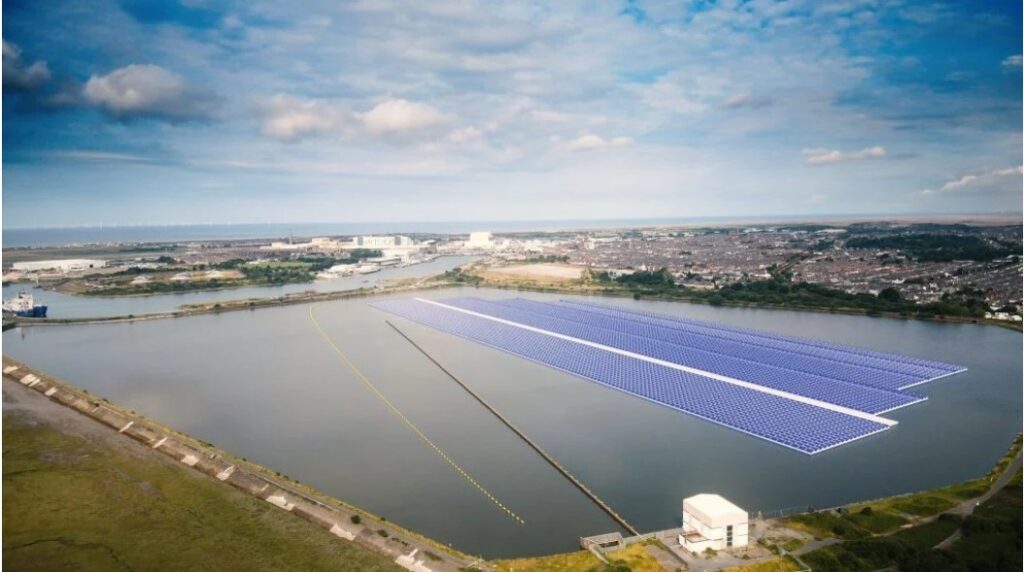
Associated British Ports (ABP) has submitted a planning application for what will be the UK’s largest floating solar project.
The project, named Barrow EnergyDock, will see 47,000 floating solar panels with an estimated 40MWp capacity installed in the Port of Barrow, Cumbria. The proposed solar array would cover around one-third of the available water area in the dock, allowing current leisure activities in the dock to continue and even allowing for the potential expansion of leisure activities in the water. The solar panels will be mounted on floating pontoons and will be secured to the bottom of the dock by an anchoring system.
ABP has commissioned environmental and engineering consultancy Green Cat Renewables to design the project and deliver the planning application elements. ABP’s marine consultancy carried out marine ecology surveys to establish that no significant ecological impacts will occur from the proposed developments.
The choice to install floating solar as opposed to ground-mounted solar panels will ensure that port land will be preserved for operational and manufacturing uses that will support jobs in the area.
Kirsten Abbott, group commercial manager (energy) at ABP said: “We are thrilled to be submitting the planning application for the Barrow EnergyDock, which is a testament to ABP’s commitment to sustainability and innovation. It aligns with the goals set out in ABP’s sustainability strategy – Ready for Tomorrow – and represents a significant step towards a greener future for the Port.”
Could floating solar be on the rise?
The current largest floating solar development in the UK is a 6.3MW development on the Queen Elizabeth II reservoir, near London, while Nova Innovation’s Edinburgh development has been successfully powering Forth Ports’ headquarters since late 2023.
As explored in a recent Solar Power Portal blog, the UK has very little floating solar online at present, but research has found that the UK could significantly benefit from increased rollout of floating solar. According to researchers from Lancaster University and Bangor University, if the UK took full advantage of its floating solar potential – which the researchers defined as covering 10% of any eligible lake’s surface area with a floating solar installation – the UK could produce as much as 2.7TWh of electricity each year from floating solar.

